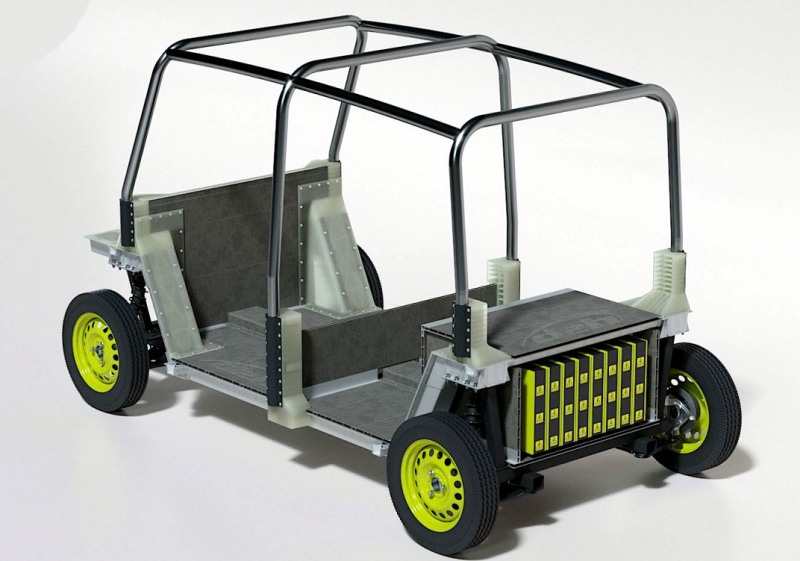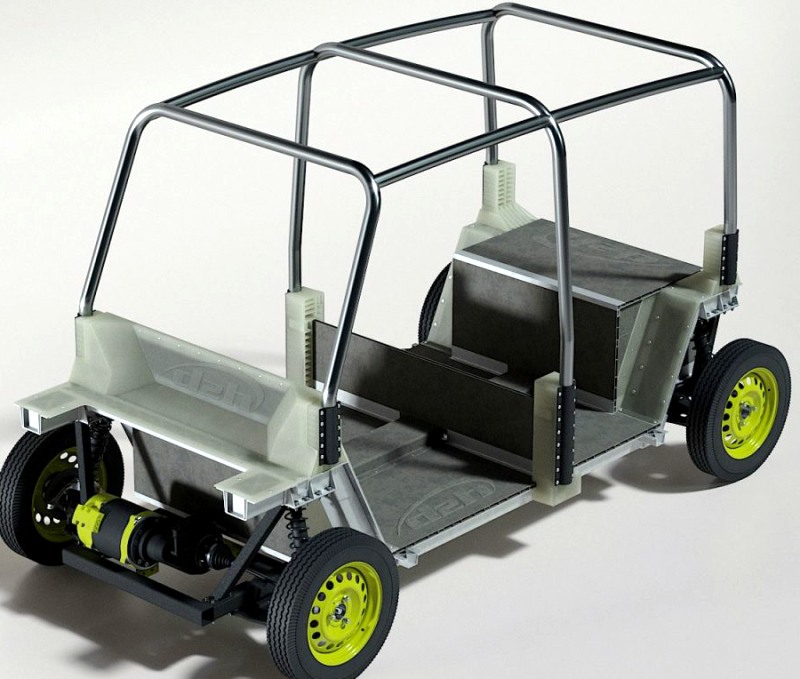UK Looking to Low Cost Electric UTVs
A U.K.-based advanced engineering company is leading a consortium to design an innovative, low cost electric vehicle chassis that has the potential to provide an environmentally compatible alternative to the aged Tuk-Tuk utility vehicle that is widely used in India and Asia.
D2H is the lead partner in a consortium funded by Innovate UK’s IDP15 scheme, for industry-led research into on-vehicle technologies that accelerate the transition to zero emission vehicles in the U.K. and globally.
“Many electric vehicle projects target high-performance, high-value chassis concepts,” says Matthew Hicks, D2H Engineering Director. “While these are great engineering projects, we identified a need for a very low cost, zero emissions utility vehicle which can be adapted to different configurations and offers the potential for much greater uptake. Having secured Coventive Composites and Warwick Manufacturing Group (WMG) as partners, alongside Innovate UK’s funding assistance, we have carried out a detailed design study to create a novel chassis which can be built locally to the market it is intended for, incorporating materials and manufacturing processes which are simple to use, abundant in the market and considerate to environmental issues, whilst providing consumers with the option of an accessible electric-powered utility vehicle.”

Coventive Composites had been developing a jute-based natural fiber thermoplastic polymer.
“This material has many advantages — the jute is readily available in the target markets and is both lightweight and relatively strong,” says Hicks. “When compared to metal alternatives, fiber reinforced thermoplastics have reduced manufacturing cycle times and energy requirements and allow high levels of detail to be molded in, so they typically require less post processing. It was a material we wanted to incorporate into our design.”
The resulting chassis is a predominantly bonded assembly.
“WMG has been a great help in assisting us with the process work for production,” continues Hicks.
The design meets the L7E Heavy Quadricycle EU classification, so although currently exempt from crash test assessment, it was always a design imperative that the new vehicle raised the bar for safety performance in its price sector. In its present form the design uses proprietary suspension, brakes and steering from a current production chassis, with front-wheel drive from a front-mounted motor and battery packs stored in between the rear wheels. The design weight is 480 kg, not including batteries.
“While we are designing for a low voltage powertrain, we have no specific solution in mind at this stage,” adds Hicks. “However, we envisage power and cooling sufficient for 12 hours continuous use — these are utility vehicles and need to be kept in service for long periods.”

D2H plans to move to the prototype and testing stage with the help of further partners.
“Having made good progress so far, we are keen to take this project further” says Hicks. “The development of the vehicle will require like-minded powertrain and battery providers, who can provide robust and very low-cost alternatives to petrol combustion units.”
Hicks concludes: “This a modern, clean running version of the legendary Tuk-Tuk, which has been so successful in mobilizing millions of people in India, South-East Asia and South America. If we can create a lighter, safer, zero emissions alternative that competes on cost and utility, then we will have done the job.”

